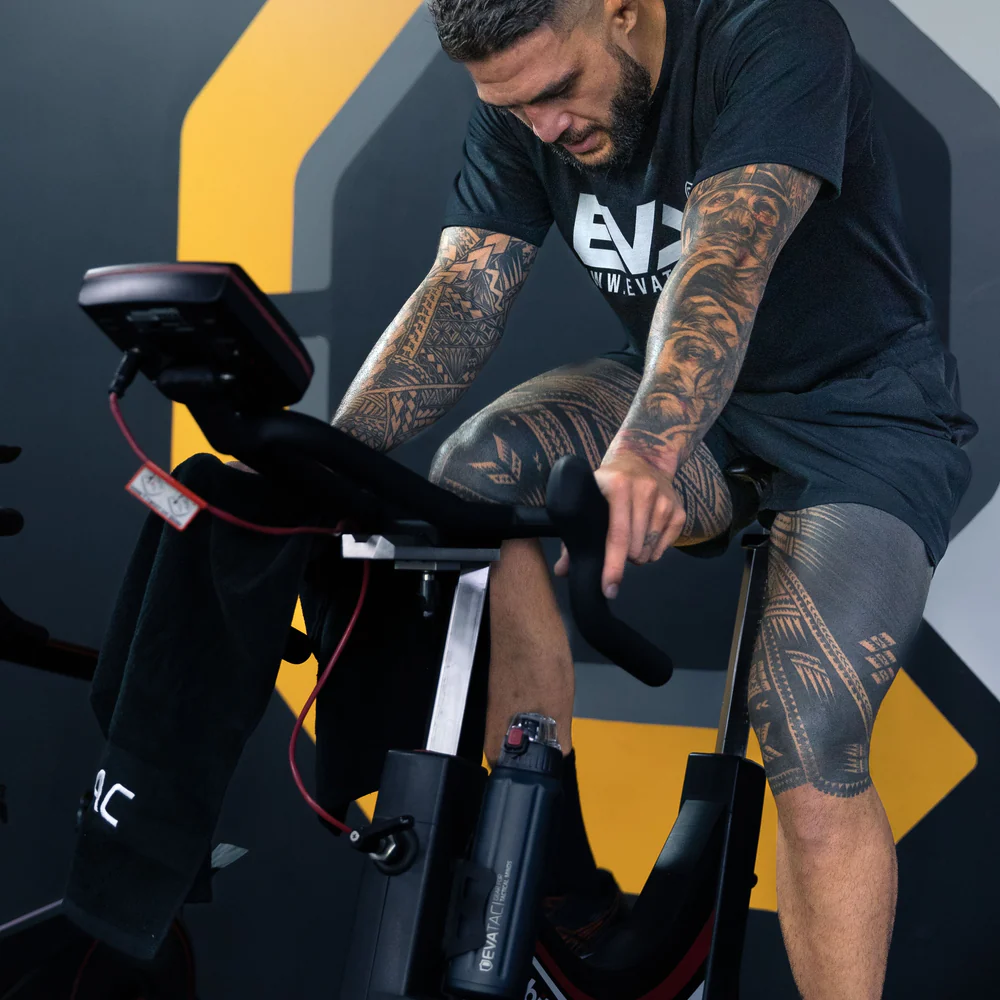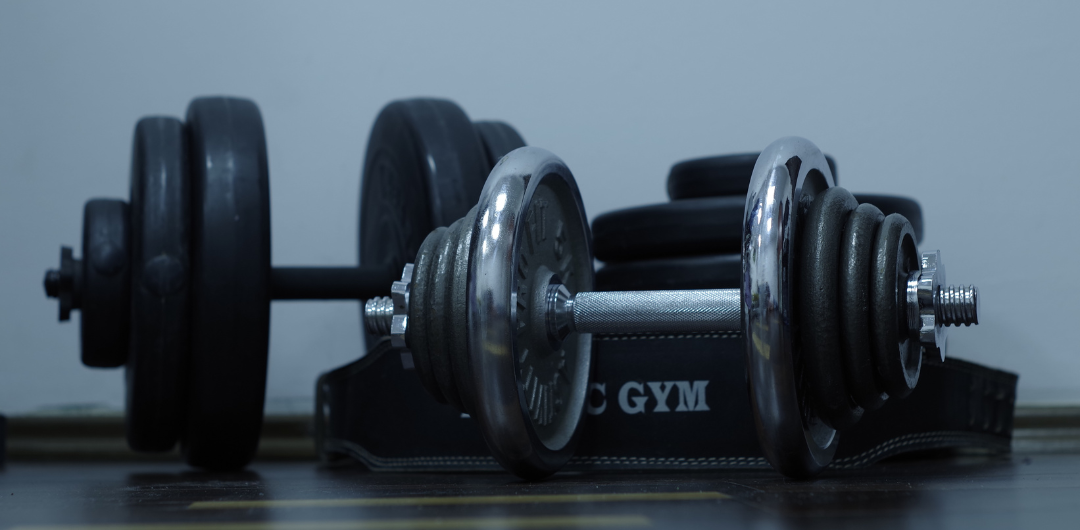
How Rest-Pause Training Can Boost Your Fitness
Are you tired of doing the same old workouts with the same weights and reps? Do you want to take your fitness routine to the next level? Look no further than rest-pause training.
Rest-pause training is a powerful and effective training technique that can help you gain muscle faster, increase your strength gains, and boost your overall fitness level. In this article, we will explore the rest-pause method, its benefits, and how it works.
Getting Started with Rest-Pause Method

Rest-pause training is a method of weight training where you take short rest periods between sets to allow your muscles to recover before doing as many reps as possible with the same weight. The idea is to keep the intensity high by resting just enough to allow you to perform more reps with the same weight.
To get started with rest-pause training, you need to follow these steps:
-
Choose a weight that is about 80% of your 1 rep max.
-
Perform your first set of reps, aiming for about 8 reps.
-
Rest for 10-15 seconds.
-
Perform as many reps as possible with the same weight.
-
Rest for another 10-15 seconds.
-
Perform another set of as many reps as possible.
-
Repeat this process until you can no longer perform any more reps.
Rest-pause training is a challenging technique, and it's essential to maintain good form throughout your sets. Ensure that you are using proper technique and avoid using momentum to complete your reps.
How Rest-Pause Training Helps You Gain Muscle Faster

Rest-pause training helps you gain muscle faster by targeting your muscle fibres more effectively. When you lift weights, your muscles activate different muscle fibres to generate force. However, not all muscle fibres are recruited with each rep.
With traditional lifting, you may not be able to target all of your muscle fibres, especially those that are more resistant to fatigue. Rest-pause training helps activate more individual muscle fibres by allowing you to do more reps with the same weight.
Rest-Pause and Hypertrophy

When it comes to building muscle, hypertrophy is the name of the game. Hypertrophy is the process of increasing muscle size, and it is a crucial part of any muscle-building program. In this section, we'll take a closer look at how rest-pause training can promote hypertrophy, and why it's such an effective training technique.
Rest-pause training is a training technique that involves taking short rest periods between reps or sets, allowing you to perform more reps with the same weight, and push your muscles to fatigue.
By allowing for longer rest periods between sets, you are able to push your muscles to failure, recruit more individual muscle fibres, and ultimately stimulate more muscle growth. Let's dive into how rest-pause training can help you achieve hypertrophy.
1. More Stress on Your Muscles
When you perform a rest-pause set, you are putting your muscles under more stress than you would with traditional sets. This additional stress can lead to greater muscle growth. By resting for a short period of time between reps or sets, you are able to recover just enough to keep going, but not enough to fully recover.
This means that your muscles are constantly stressed, which can lead to hypertrophy.
2. Greater Hypertrophy Compared to Traditional Sets
Research has shown that rest-pause training can lead to greater hypertrophy compared to traditional sets. In a study published in the Journal of Strength and Conditioning Research, researchers found that participants who performed rest-pause sets for the bench press experienced greater muscle growth compared to those who performed traditional sets.
The rest-pause group performed three sets of six reps with a weight that was 85% of their 1 rep max. They took 10 seconds of rest between each rep and 30 seconds of rest between each set. The traditional lifting group performed three sets of six reps with the same weight, but they took longer rest periods of 2-3 minutes between sets.
The results showed that the rest-pause group experienced significantly greater hypertrophy compared to the traditional lifting group.
3. Time Efficiency
One of the biggest advantages of rest-pause training is its time efficiency. Since you are taking shorter rest periods, you are able to perform more reps in a shorter amount of time. This can be especially beneficial for those who have limited time to work out, or those who want to add some intensity to their workouts without spending hours in the gym.
4. More Reps With the Same Weight
Another benefit of rest-pause training is that you are able to perform more reps with the same weight. This can be beneficial for those who have reached a plateau with their current lifting routine and need to increase their workout volume to continue making progress.
By performing more reps with the same weight, you are greatly increasing your workout volume, which can lead to greater muscle growth.
5. Variety in Training
Rest-pause training can also add some variety to your training routine. If you're used to performing traditional sets with longer rest periods, incorporating rest-pause sets can be a great way to challenge your muscles in a new way. Plus, since rest-pause sets involve lighter weights, they can be a good way to give your joints a break from heavy lifting.
While rest-pause training has many benefits, it's important to note that it may not be suitable for everyone. It can be a very intense training technique, and should be approached with caution, especially for beginners. It's also important to use proper form and technique to avoid injury.
What are Some of the Pros and Cons of Rest-Pause Sets?
Rest-pause sets are a popular training technique that can help you reach your fitness goals, but like any other training method, it has its own set of pros and cons. In this section, we will explore some of the benefits and drawbacks of rest-pause sets to help you determine if this training technique is right for you.
Pros:
-
Increases workout volume: Rest-pause sets allow you to perform more reps with the same weight by taking short rest periods between sets. This can greatly increase your workout volume and stimulate muscle growth, making it a great technique for building muscle and strength.
-
Full-body workout: Rest-pause sets work multiple muscle groups, providing a full-body workout that can help you achieve your fitness goals more efficiently. This technique is especially beneficial for those who want to target multiple muscle groups in a single session.
-
Improves muscle endurance: Rest-pause training helps to improve muscle endurance by pushing your muscles to fatigue. This makes it an excellent technique for team sport athletes who need to maintain their endurance throughout a game or match.
-
Solves the problem of muscle adaptation: Muscles adapt quickly to the same routine, which can lead to a plateau in muscle growth. Rest-pause training allows you to increase the volume of work without increasing the weight, which helps to prevent muscle adaptation and stimulates muscle growth.
Cons:
-
Lighter weights: Rest-pause sets may involve lighter weights, which could be an issue for those who are focused on heavy lifting. If you are looking to build strength, you may want to incorporate traditional sets into your training routine.
-
Shorter rest periods: Rest-pause sets require shorter rest periods, which could be challenging for those with lower levels of fitness. If you are just starting out with resistance training, you may want to start with longer rest periods and work your way up to rest-pause sets.
-
Not suitable for everyone: Rest-pause sets may not be suitable for those with a history of injury or joint issues. This training technique can be intense, and it's important to use proper form and technique to avoid injury.
Looking at Rest-Pause From Another Angle
While most people associate rest-pause training with muscle gain, this powerful training technique can also be used to increase muscle endurance and strength gains. In this section, we'll explore how rest-pause training can benefit athletes, as well as anyone looking to take their workouts to the next level.
Rest-Pause for Team Sport Athletes

Team sports athletes, such as football players, basketball players, and soccer players, require a combination of strength, power, and endurance to perform at their best. They need to be able to perform explosive movements repeatedly throughout a game, while also maintaining their strength and power. This is where rest-pause training can be beneficial.
By performing rest-pause sets, team sport athletes can recruit more individual muscle fibres during each set, helping them to build endurance and maintain their explosive power throughout the game.
Rest-pause training can also help athletes to recover more quickly between sets, which can be especially beneficial during high-intensity games or training sessions.
Rest-Pause for Strength Gains
If you're looking to increase your strength gains, rest-pause training can be a valuable tool in your arsenal. When you perform a rest-pause set, you are able to lift more weight for more reps than you would be able to with traditional sets. This increase in weight and reps can help to increase muscle growth, which can in turn help to increase strength gains.
Rest-pause sets also allow you to reach complete fatigue and recruit more muscle fibers, which can help to stimulate more muscle growth. This increase in muscle growth can then translate to increased strength gains over time.
It's important to note that rest-pause training should be used in combination with other training techniques, such as progressive overload and proper nutrition, to see the best results. While rest-pause training can be a valuable tool for building muscle endurance and increasing strength gains, it should not be the sole focus of your training program.
Exploring the Research into Rest-Pause Sets
If you're curious about trying out rest-pause training, you may be wondering what the research says about its effectiveness. Fortunately, there have been several studies conducted on the subject that shed light on how this training technique can impact muscle growth and strength gains. Let's take a closer look at some of the most noteworthy findings.
Rest-Pause and Muscle Growth
A study published in the Journal of Strength and Conditioning Research compared the effects of rest-pause squat training to traditional lifting sets. Participants were divided into two groups: the rest-pause group and the traditional lifting group.
The rest-pause group performed three sets of six reps with a weight that was 85% of their 1 rep max. They took 20 seconds of rest between each rep and 90 seconds of rest between each set. On the other hand, the traditional lifting group performed three sets of six reps with the same weight, but they took longer rest periods of 2-3 minutes between sets.
The results showed that the rest-pause group experienced significantly greater muscle growth compared to the traditional lifting group. This can be attributed to the fact that rest-pause training allows for more reps to be completed with the same weight, which leads to a greater stimulus for muscle fibres.
Rest-Pause and Muscle Endurance
Another study published in the International Journal of Sports Medicine found that rest-pause training can help to increase muscle endurance. In this study, 10 male participants were randomly assigned to either a rest-pause group or a traditional lifting group.
The rest-pause group performed three sets of as many reps as possible with 70% of their 1 rep max, with 10 seconds of rest between each rep and 30 seconds of rest between each set. The traditional lifting group performed three sets of as many reps as possible with 70% of their 1 rep max, but they took longer rest periods of 2-3 minutes between sets.
The results showed that the rest-pause group performed significantly more reps than the traditional lifting group, indicating an increase in muscle endurance. This is likely due to the fact that rest-pause sets solve the problem of reaching complete fatigue in the last few reps of a traditional set, allowing for more reps to be completed overall.
Final Thoughts
In conclusion, rest-pause training is an effective and efficient way to build muscle and strength while also increasing endurance. By allowing for longer rest periods between sets, you are able to push your muscles to failure, recruit more individual muscle fibres, and ultimately stimulate more muscle growth.
While this training technique may not be suitable for everyone, it can be a great way to break through a plateau or add some variety to your workouts. If you're interested in trying out rest-pause training for yourself, it's important to start slowly and work your way up to more intense workouts.
Be sure to use proper form and technique to avoid injury, and always listen to your body.
At EVATAC, we offer a wide range of products to help you get the most out of your workouts, including wrist wraps, training towels, and more. We believe in providing our customers with high-quality fitness gear at an affordable price so that anyone can achieve their fitness goals.
We invite you to explore our products and see how they can help you take your workouts to the next level.





Leave a comment
This site is protected by reCAPTCHA and the Google Privacy Policy and Terms of Service apply.